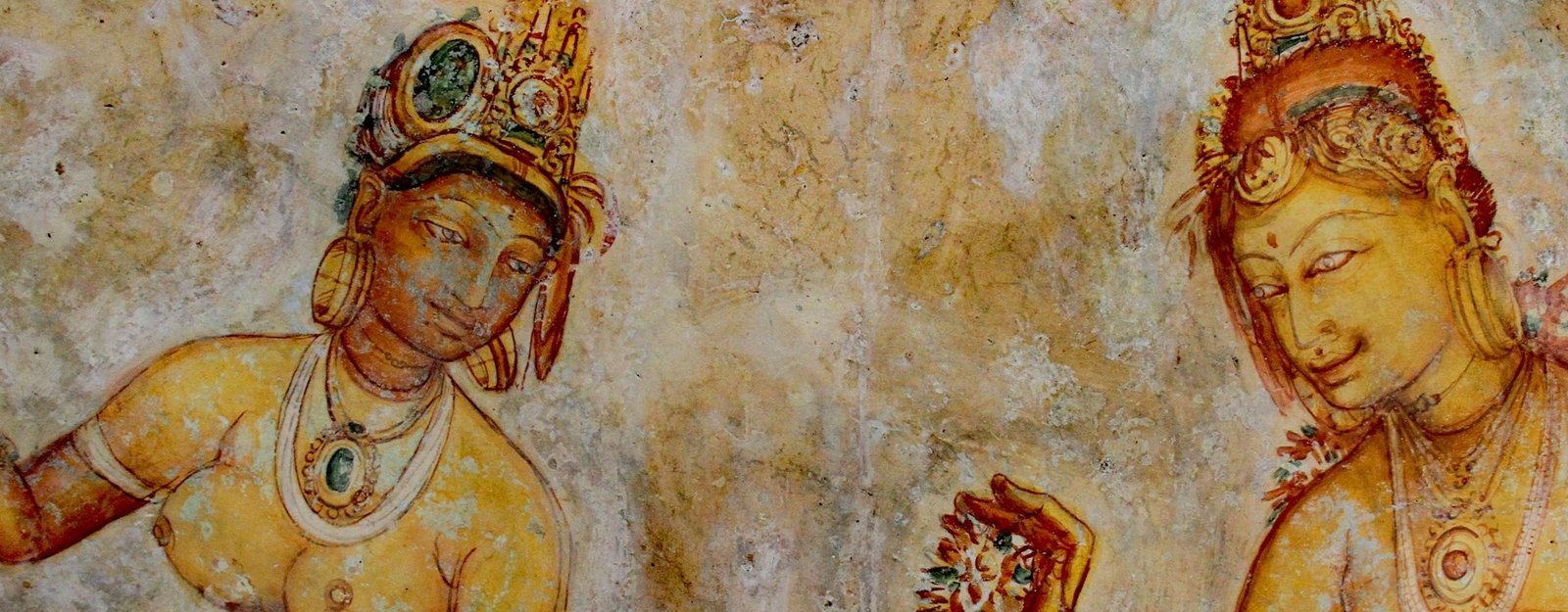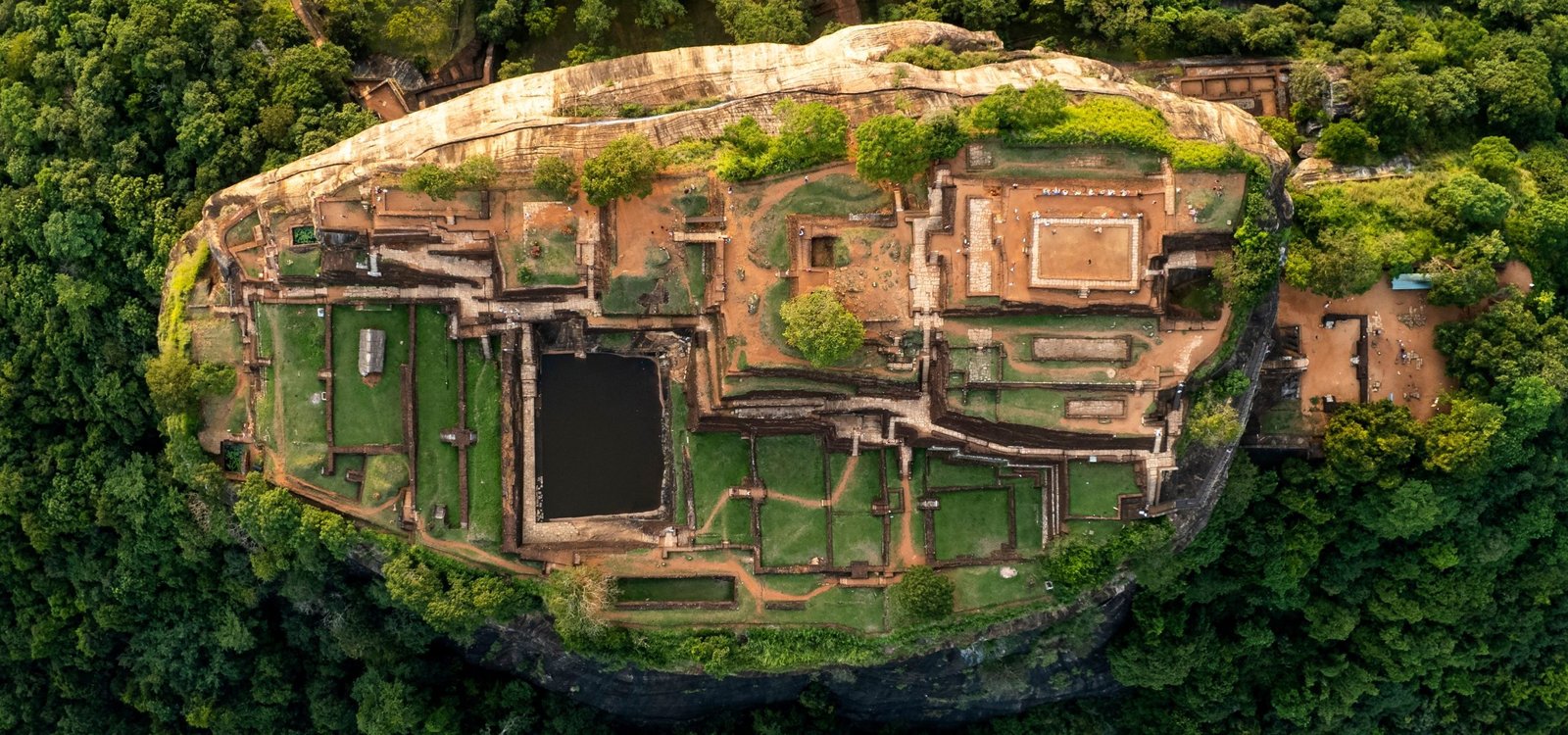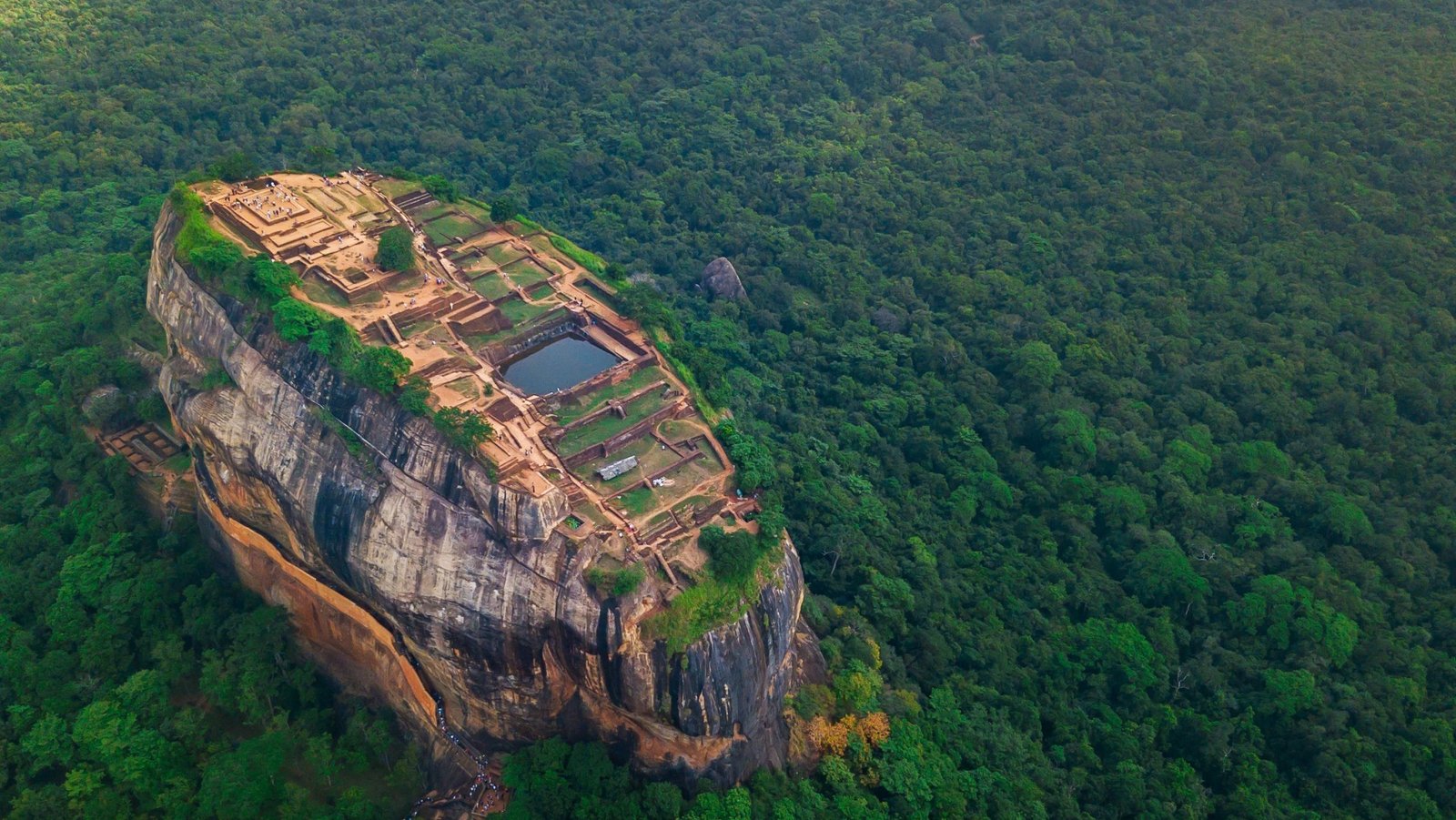Nestled in the heart of Sri Lanka’s Central Province, Sigiriya, or “Lion Rock,” stands as a testament to ancient ingenuity and artistry. Rising approximately 180 meters above the surrounding plains, this massive granite monolith was transformed into a royal citadel by King Kashyapa I during his reign from 477 to 495 AD .
The site was chosen for its strategic advantage and transformed into a complex urban center featuring palaces, gardens, and sophisticated water management systems. After King Kashyapa’s demise, Sigiriya served as a Buddhist monastery until the 14th century, further enriching its historical tapestry.

Artistic Wonders: Frescoes and the Mirror Wall
One of Sigiriya’s most enchanting features is its frescoes. These vibrant paintings, depicting celestial maidens known as “Apsaras,” adorn the western face of the rock. The true identity of these figures remains a subject of debate, adding an air of mystery to their allure .
Adjacent to the frescoes lies the Mirror Wall, a polished surface that once reflected the king’s image as he passed by. Over centuries, visitors inscribed poems and thoughts on this wall, offering insights into the emotions and expressions of ancient travelers .

Ingenious Landscaping: The Gardens of Sigiriya
Sigiriya is home to some of the oldest landscaped gardens in the world, showcasing a blend of symmetrical and asymmetrical designs. The water gardens, with their sophisticated hydraulic systems, still function today, especially during the rainy season . These gardens highlight the advanced engineering and aesthetic sensibilities of ancient Sri Lankan civilization

0 Comment